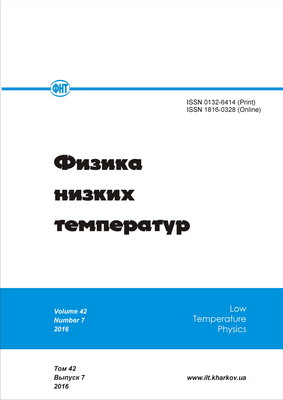

 | Наукова періодика України | 
| Фізика низьких температур |
Pudalov V. M. David Shoenberg and the beauty of quantum oscillations / V. M. Pudalov // Физика низких температур. - 2011. - Т. 37, № 1. - С. 12-24. - Режим доступу: http://nbuv.gov.ua/UJRN/PhNT_2011_37_1_5 The quantum oscillation effect was discovered in Leiden, in 1930, by W.J. de Haas and P. M. van Alphen in magnetization measurement, and by L. W. Shubnikov and de Haas - in magnetoresistance. Studying single crystals of bismuth, they observed oscillatory variations of magnetization and magnetoresistance with magnetic field. Shoenberg, whose first research in Cambridge had been on bismuth, found that much stronger oscillations are observed when a bismuth sample is cooled to liquid helium rather than to liquid hydrogen, which had been used by de Haas. In 1938 Shoenberg came from Cambridge to Moscow to study these oscillations at Kapitza Institute where liquid helium was available at that time. In 1947, J. Marcus observed similar oscillations in zinc, that persuaded Shoenderg to return to this research, and, since then, the dHvA effect had been one of his main research topic. In particular, he developed techniques for quantitative measurements of the effect in many metals. Theoretical explanation of quantum oscillations was given by L. Onsager in 1952, and the analytical quantitative theory by I. M. Lifshitz and A. M. Kosevich in 1955. These theoretical advancements seemed to provide a comprehensive description of the effect. Since then, quantum oscillations were commonly considered as a tool for measuring Fermi surface extremal cross-sections and all-angle electron scattering times. However, in his pioneering experiments in 1960s, Shoenberg revealed the richness and deep essence of the quantum oscillation effect and showed how the beauty of the effect is disclosed under nonlinear conditions imposed by interactions in the system under study. It was quite unexpected, that under "magnetic interaction" conditions, the apparently weak effect of quantum oscillations may lead to such strong consequences as breaking the sample into magnetic (now called "Shoenberg") domains and the formation of an inhomogeneous magnetic state. Owing to his contribution to the field of quantum oscillations and superconductivity, Shoenberg is no doubt one of the 20th century's foremost experts. We describe the experiments on finding the quantitative parameters of electron - electron interaction, which are in line with the Shoenberg ideas that the quantum oscillations are modified by interactions and, hence, their analysis enables one to extract the quasiparticle interaction parameters. Цитованість авторів публікації: Бібліографічний опис для цитування: Pudalov V. M. David Shoenberg and the beauty of quantum oscillations / V. M. Pudalov // Физика низких температур. - 2011. - Т. 37, № 1. - С. 12-24. - Режим доступу: http://nbuv.gov.ua/UJRN/PhNT_2011_37_1_5. |
|
|
Всі права захищені © Національна бібліотека України імені В. І. Вернадського |
|||||